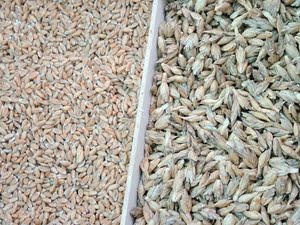Although wheat has enjoyed a long-term reputation as a health food, the number of people who report an adverse reaction to eating wheat is on the rise. Several factors may contribute to a growing intolerance of wheat including overuse and genetic modification.
The Overuse of Wheat
Because wheat is such a versatile grain, it is an ingredient in most popular food products. This overuse can lead to a person’s inability to digest and utilize it properly.
Wheat Refinement and Enrichment?
Wheat has been refined and changed genetically many times since humans began using it over 10,000 years ago. These changes may make it harder for the human body to synthesize modern wheat. If you find wheat does not support the level of health you’d like to enjoy, here are four healthy and delicious wheat flour alternatives.
Spelt Flour
Spelt is a grain that is closely related to wheat. Spelt has been prized by humans for a very long time as evidence of its use as early as the fifth millennium has been found in the region north of the Black Sea. Although spelt flour is not gluten-free, it is a nutritious alternative to wheat. Spelt is 17% protein, more than 9% fiber, and contains numerous minerals and vitamins. When using spelt flour as a wheat substitute in a recipe, use it cup for cup in place of wheat flour.
Coconut Flour
Coconut flour is a delicious wheat flour alternative that is both gluten-free and grain free. The fact that coconut flour is grain free is a big plus for individuals who are intolerant of grains in general. Coconut flour is naturally sweet, and when it’s baked into muffins, cupcakes, breads, etc. they inherit its distinctive, sweet flavor and require less sweetener. Coconut flour is extremely high in fiber, even higher than flaxseeds. Because of its high fiber content, coconut flour can be quite heavy, so when baking with coconut flour consider blending it with another flour.
Amaranth Flour
Amaranth flour is a gluten-free wheat alternative made from small amaranth seeds. Amaranth is said to have enjoyed its peak during the Aztec civilization in Mexico. Amaranth is abundant in protein; in fact, 100 grams of amaranth provide 100% of an adult’s recommended daily intake. Amaranth is also high in fiber and contains lysine, an essential amino acid. When using amaranth flour alone, it is best to use it in non-rising bread like pizza dough or biscuits. If you’re baking a bread that needs to rise, combine amaranth with another flour.
Quinoa Flour
Nutty flavored quinoa flour is made by grinding the seeds of the ancient quinoa plant. Quinoa flour is more coarse than wheat flour and has a much more distinctive taste. Quinoa is very nutrient rich, it contains protein, calcium, zinc, magnesium, manganese, vitamin B, potassium, and phosphorus. Because quinoa flour is quite different from wheat flour, when using it as a wheat replacement, experiment with the amount of flour used, the measurement of other ingredients, and baking time. Quinoa flour is delicious in combination with other healthy flours like buckwheat, almond, and chickpea.
Experiment with these and other wheat alternatives, and diversify the flours you use. Along with many others, spelt flour, coconut flour, amaranth flour, and quinoa flour are tasty and nutritious substitutes. Shop for nutritious wheat flour alternatives at health food stores, in the health food section of your local supermarket, and online. Whether you are intolerant of wheat or simply like to explore different foods, you can benefit from a wide range of flours and the nutrition they provide.
Sources:
http://en.wikipedia.org/wiki/Spelt
http://www.thenourishinggourmet.com/2009/06/discussing-coconut-flour.html
http://www.livestrong.com/article/269955-what-is-amaranth-flour/
http://www.grain-free-gluten-free.com/quinoa-flour.html http://www.wheatanddairyfree.com/wheatdairyfreewheatfree.htm
